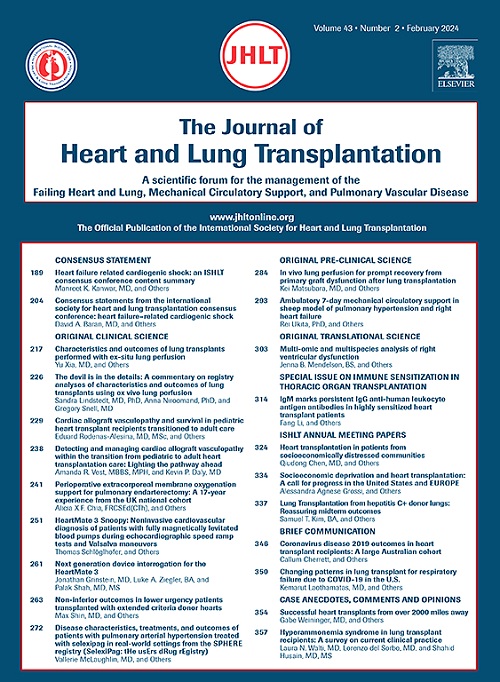Volume calibration with cardiac MRI versus hypertonic saline for right ventricular pressure-volume loops with exercise: Impact on ventricular function and ventricular-vascular coupling
IF 6.4
1区 医学
Q1 CARDIAC & CARDIOVASCULAR SYSTEMS
引用次数: 0
Abstract
Background
Right ventricular (RV) pressure-volume (PV) loops require postacquisition volume calibration by cardiac MRI (CMR) or hypertonic saline (HS). We defined the impact of these 2 volume calibration methods on rest-to-exercise ventricular contractility (end-systolic elastance: Ees), arterial afterload (Ea), and coupling (Ees/Ea).
Methods
In a prospective study, 82 RV PV-loop datapoints (rest, exercise stages every 25 W, and recovery) and CMR were acquired in 19 participants.
Results
In comparison to CMR, HS-based calibration overestimated RV end-systolic volume at rest, mean (SD) by +38 ml (48) and end-diastolic volume by +46 ml (68), resulting in underestimated right ventricular ejection fraction (RVEF) by −8%. However, Ees and Ea were similar at rest (r2 = 0.76 and 0.71, respectively, p < 0.001 for both), and Ees:Ea was identical (r2 = 1.00, p < 0.001). Exercise metrics also remained similar: RV reserve (ΔEes) and change in coupling (ΔEes/Ea).
Conclusions
In comparison to CMR (gold-standard), HS-based calibration underestimates RVEF at rest; however, it is a robust approach for measuring coupling and RV reserve.
用心脏磁共振成像与高渗盐水对运动时右心室压力-容积环路进行容积校准:对心室功能和心室-血管耦合的影响。
右心室(RV)压力-容积(PV)环路需要通过心脏磁共振成像(CMR)或高渗盐水(HS)进行采集后容积校准。我们确定了这两种容积校准方法对静息-运动心室收缩力(收缩末弹性:Ees)、动脉后负荷(Ea)和耦合(Ees/Ea)的影响。在一项前瞻性研究中,19 名参与者获得了 82 个 RV PV 环数据点(静息、运动阶段--每 25 瓦特和恢复期)和 CMR。与 CMR 相比,基于 HS 的校准高估了静息时 RV 收缩末期容积,平均(SD)+38 mL(48),舒张末期容积+46 mL(68),导致 RVEF 被低估了 -8%。然而,Ees 和 Ea 在静息时相似(r2 分别为 0.76 和 0.71,p2=1.00,p2=0.71)。
本文章由计算机程序翻译,如有差异,请以英文原文为准。
求助全文
约1分钟内获得全文
求助全文
来源期刊
CiteScore
10.10
自引率
6.70%
发文量
1667
审稿时长
69 days
期刊介绍:
The Journal of Heart and Lung Transplantation, the official publication of the International Society for Heart and Lung Transplantation, brings readers essential scholarly and timely information in the field of cardio-pulmonary transplantation, mechanical and biological support of the failing heart, advanced lung disease (including pulmonary vascular disease) and cell replacement therapy. Importantly, the journal also serves as a medium of communication of pre-clinical sciences in all these rapidly expanding areas.

 求助内容:
求助内容: 应助结果提醒方式:
应助结果提醒方式:


